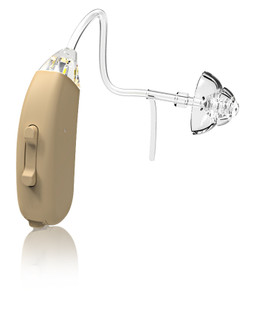Understanding Behind-the-Ear Hearing Aids: A Comprehensive Guide
Posted by DR Paul on Aug 04, 2023
Hearing loss is a challenging situation to experience, but thanks to modern technology, hearing aids have immensely improved the quality of life for people with hearing problems. Behind-the-ear (BTE) hearing aids are one of the most popular types of hearing aids. In this comprehensive guide, we will discuss everything you need to know about BTE hearing aids, including how they work, their pros and cons, and maintenance tips. If you're considering purchasing a BTE hearing aid, then read further!
What are behind-the-ear hearing aids?
BTE hearing aids feature a small casing that rests behind the ear. The casing is connected to a custom-molded earpiece by a thin tube that directs sound into the ear canal. BTE hearing aids are known for their easy-to-use design and comfortability. They are also suitable for individuals with severe to profound hearing loss because they offer a more powerful amplification.
Benefits of BTE hearing aids.
BTE hearing aids come with several benefits. One major advantage of BTE hearing aids is their durability and reliability. They are resistant to moisture, dirt, and earwax, making them easier to maintain. They are also available in various sizes, from the mini BTE to the standard BTE. Additionally, they allow for a bigger battery, which translates to more amplification power, longer battery life, and thus, more extended use.
Drawbacks of BTE hearing aids.
Although BTE hearing aids have many benefits, they have a few drawbacks as well. One disadvantage is the visibility of the casing when worn behind the ear. Many people feel self-conscious about wearing them, especially young adults. Additionally, the tubes can sometimes cause feedback, a whistling sound that occurs when sound leaks through the tube and back into the microphone.
Maintenance tips for BTE hearing aids.
BTE hearing aids require proper maintenance to function correctly. Always clean them regularly, removing any earwax buildup that might block the tubes, microphones, or speakers. Use a soft, dry cloth to clean them daily, and avoid using water or any liquids. Always check the battery to ensure it's running correctly, and replace the battery every four to seven days.
How to choose the right BTE hearing aid.
Choosing the right BTE hearing aid depends on your hearing needs and preferences. Consider factors such as style, size, battery life, and additional features such as noise reduction, Bluetooth connectivity, and telecoil (phone use). Consult with an audiologist to determine the right BTE hearing aid that suits you.
Conclusion:
In conclusion, BTE hearing aids are an excellent choice and come with various options for potential buyers. This guide should provide useful tips on understanding BTE hearing aids, from their primary functions, pros and cons, maintenance tips, and purchasing considerations. If you're considering purchasing a BTE hearing aid, this guide's information will likely come in handy! Always remember to consult with an audiologist for professional advice on your needs, budget, and preferences.










